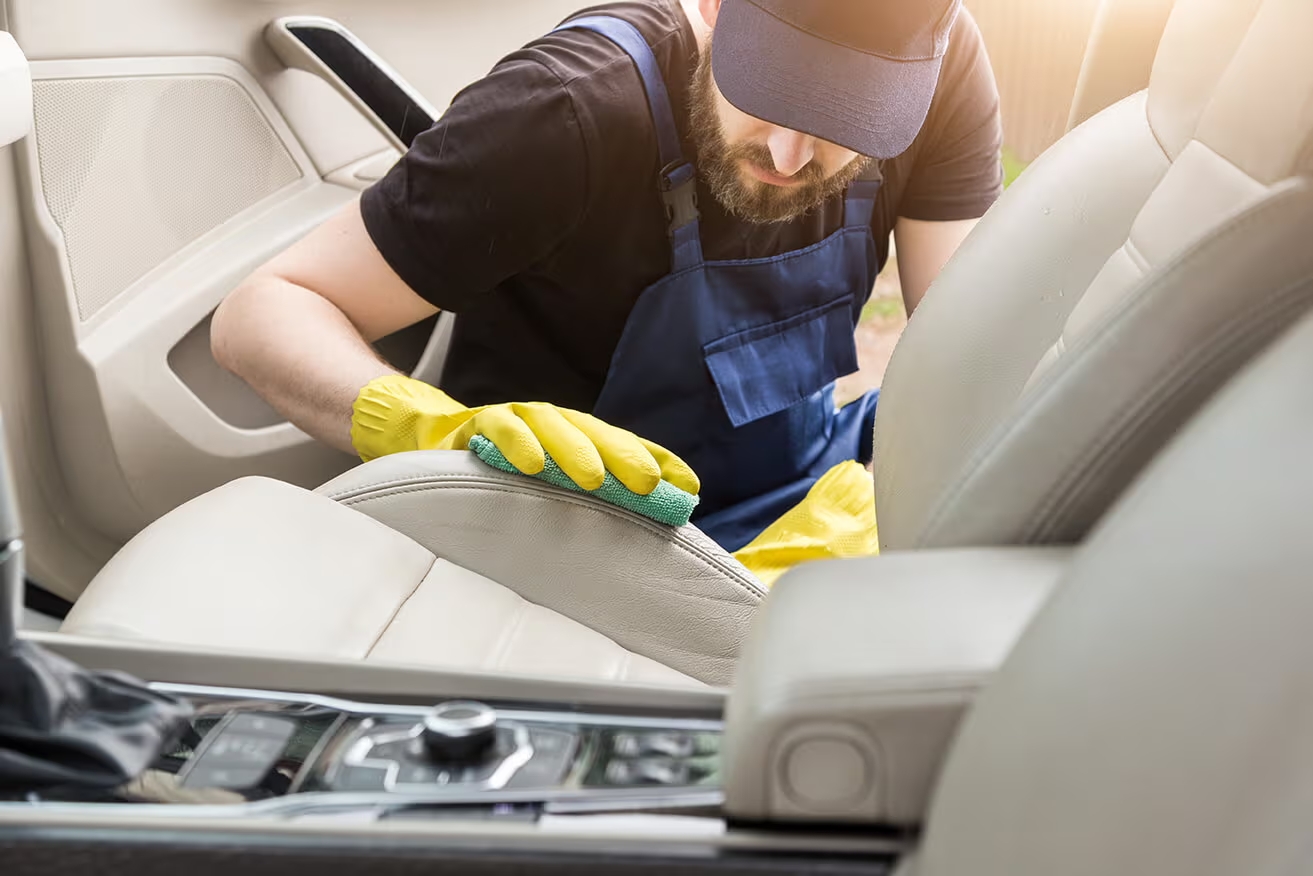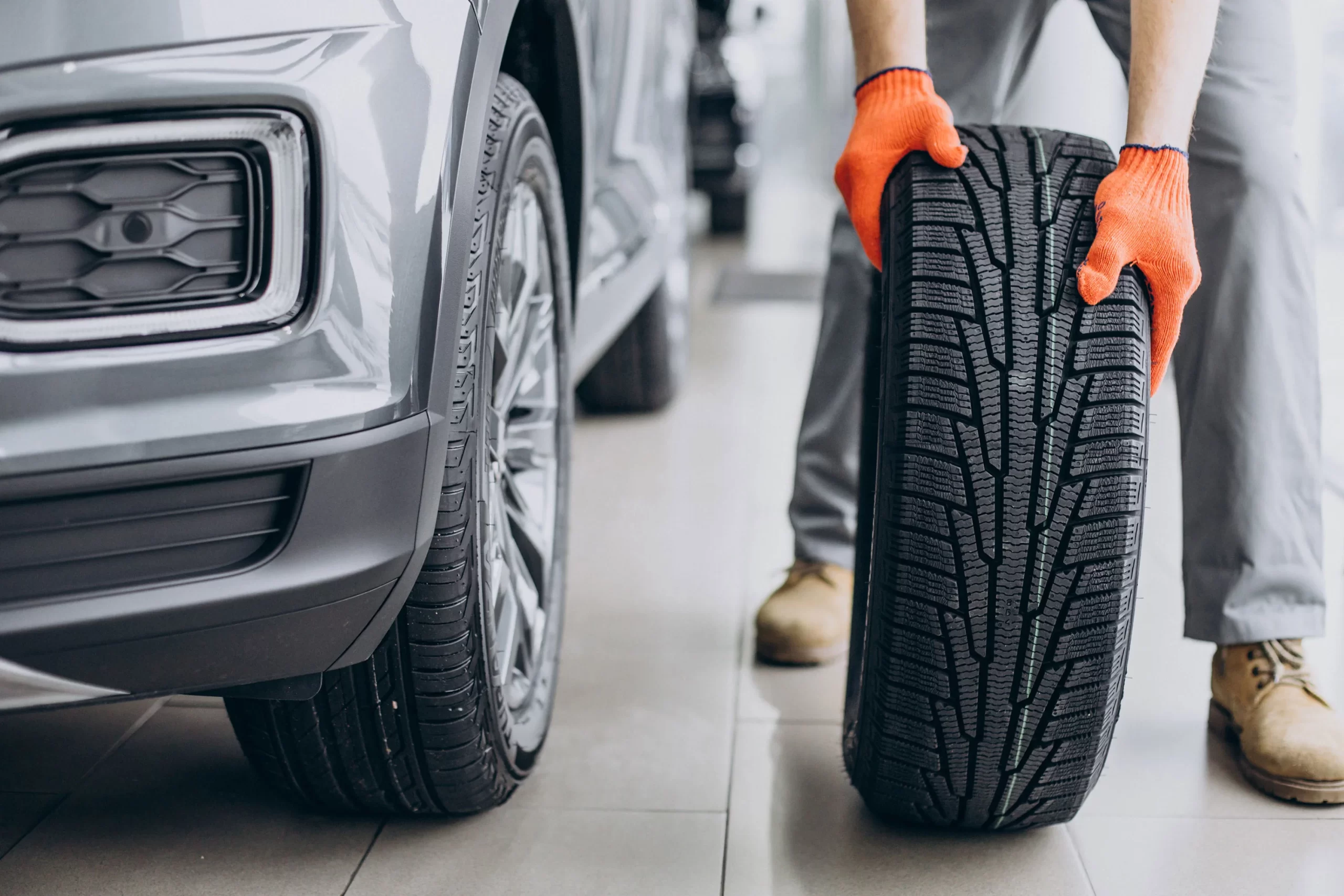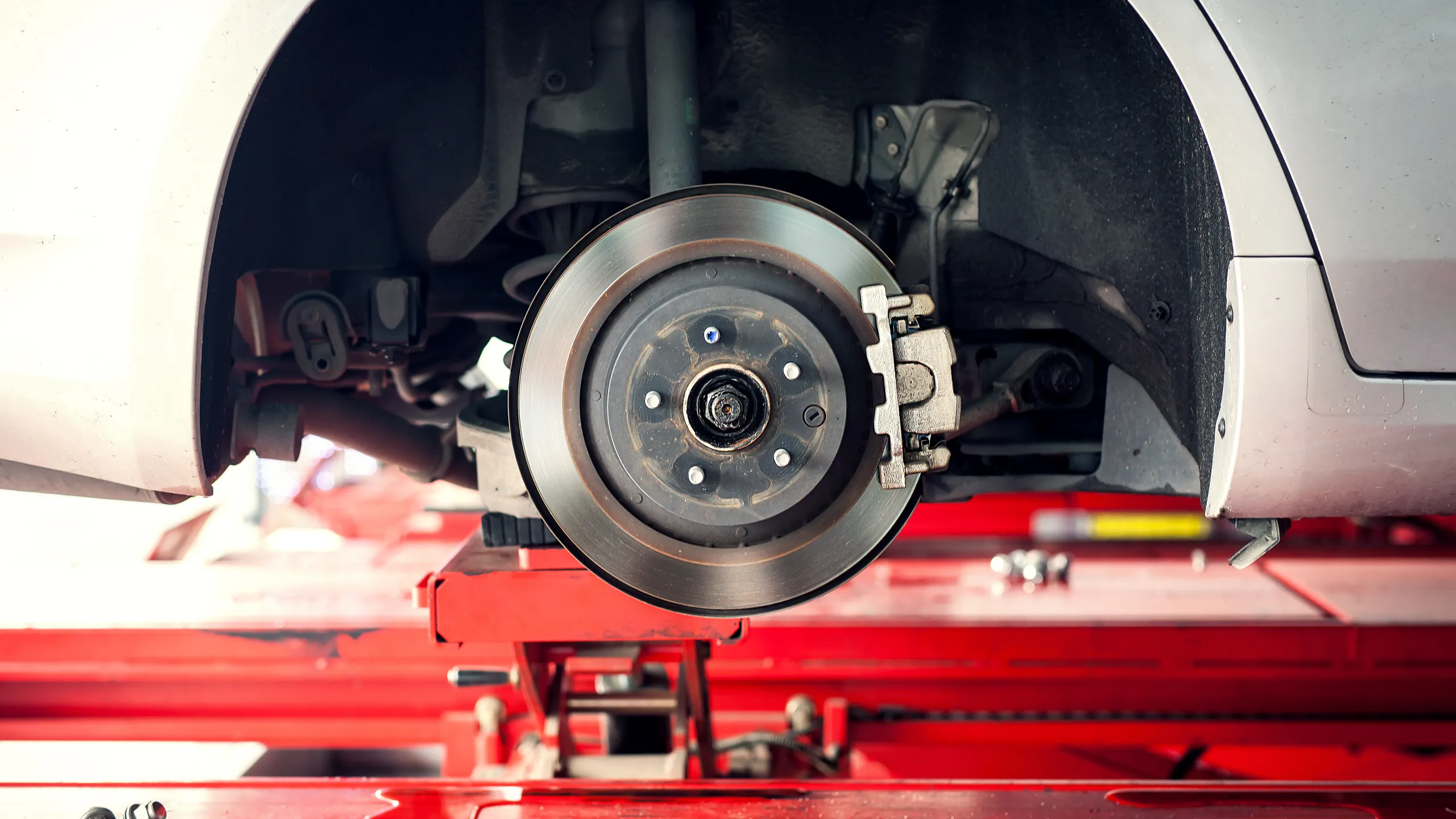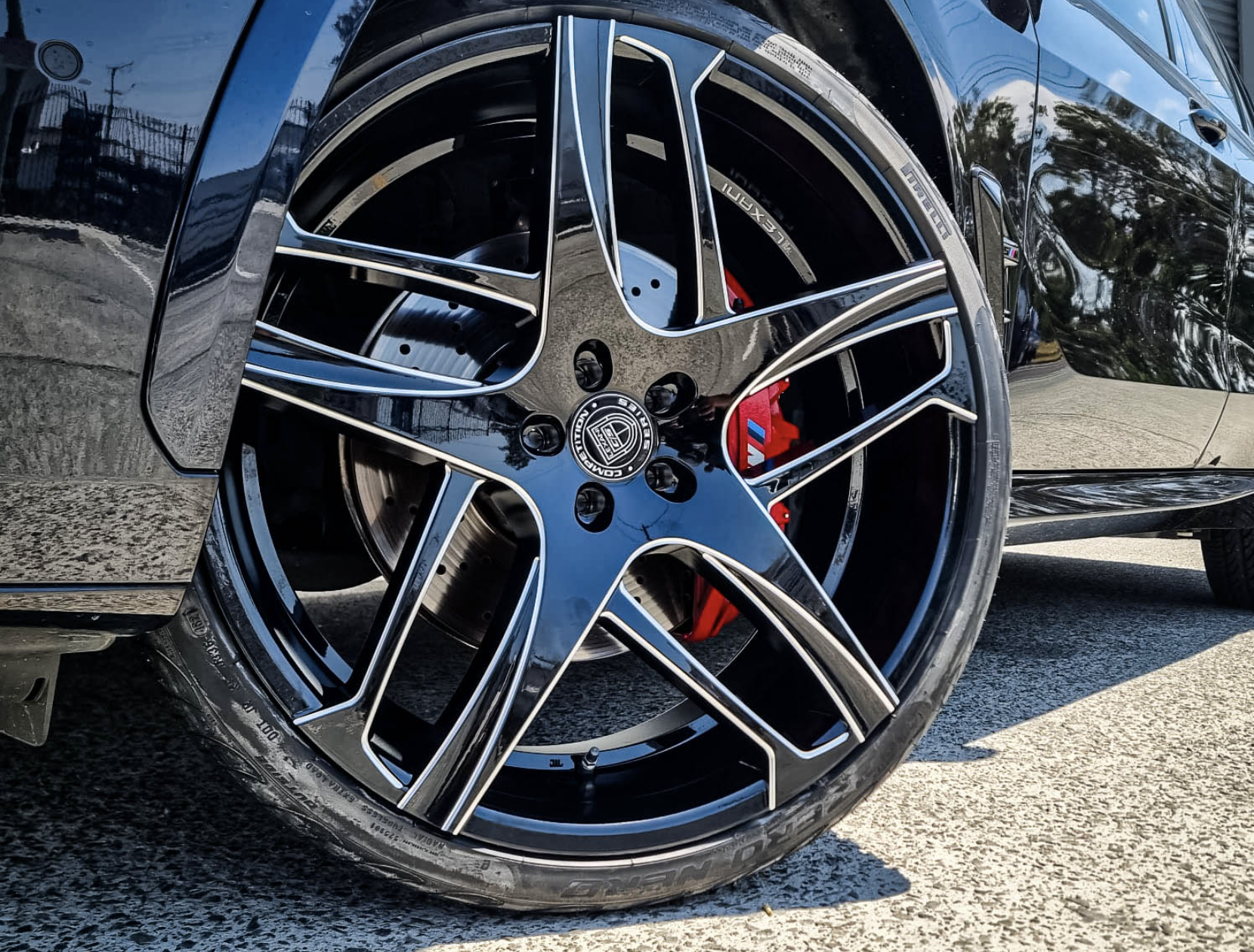Your vehicle is a frequent hub for you and your loved ones, accompanying you on daily commutes, errands and leisurely outings. Whether it’s the daily commute to school or work, a trip to the mall or the grocery store, you probably spend a considerable amount of time in your car every day. That is why it is important to keep your car’s upholstery clean and well maintained.
Before you start cleaning, it’s crucial to identify the type of upholstery on your car seats. Different materials such as fabric, leather, vinyl or suede require different cleaning approaches and products. Understanding your car’s upholstery material will help you choose the right cleaning method and ensure effective stain removal without causing damage.
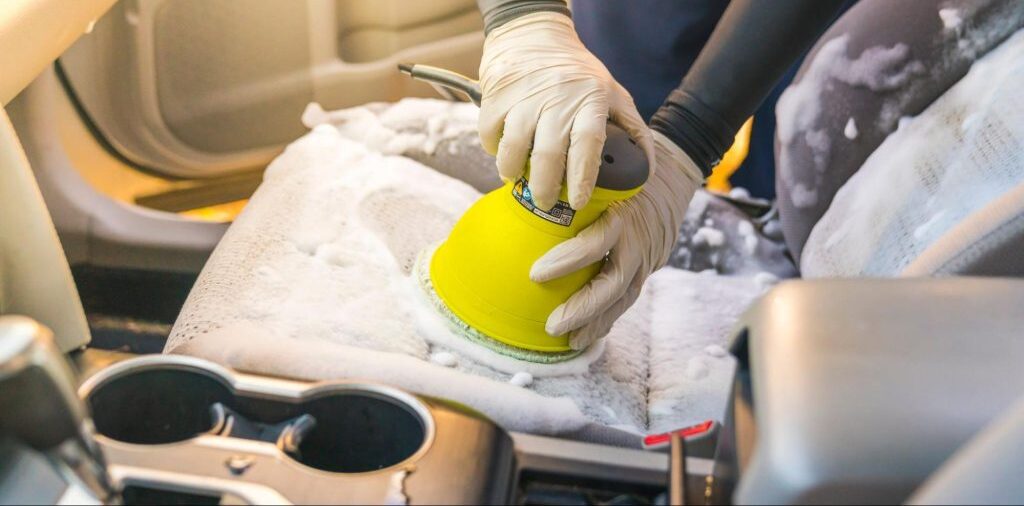
Here’s a guide to the most common types of car upholstery and how to effectively clean them:
Leather Upholstery
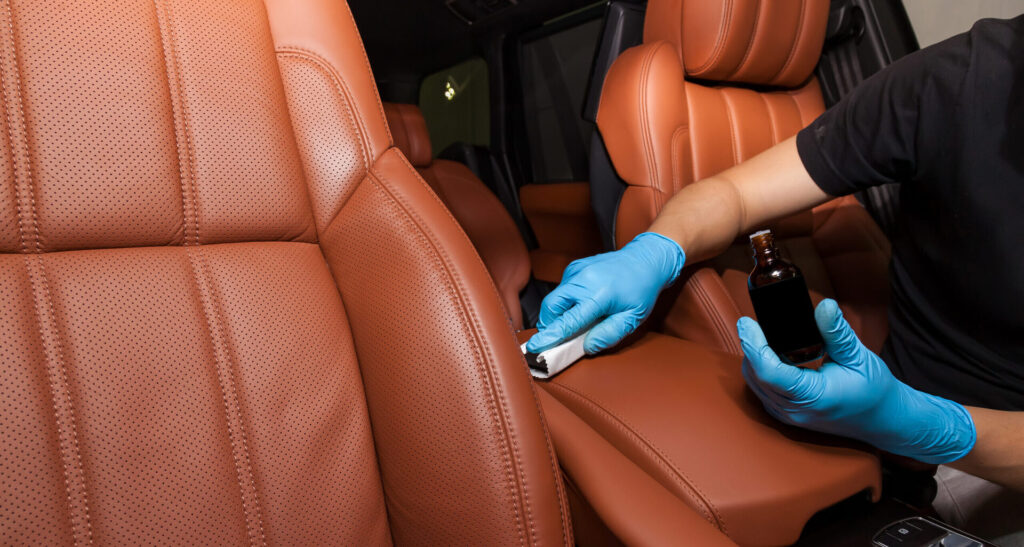
Leather is luxurious and durable, but it needs proper care to maintain its quality. Start by vacuuming the seats to remove any dirt or debris. Then use a leather cleaner specially formulated for automotive use. Apply the cleaner with a soft cloth and gently massage it into the leather in a circular motion. Wipe away any excess cleaner with a clean, damp cloth and allow the seats to air dry. Finally, treat the leather with a leather conditioner to keep it supple and prevent cracking.
Fabric Upholstery
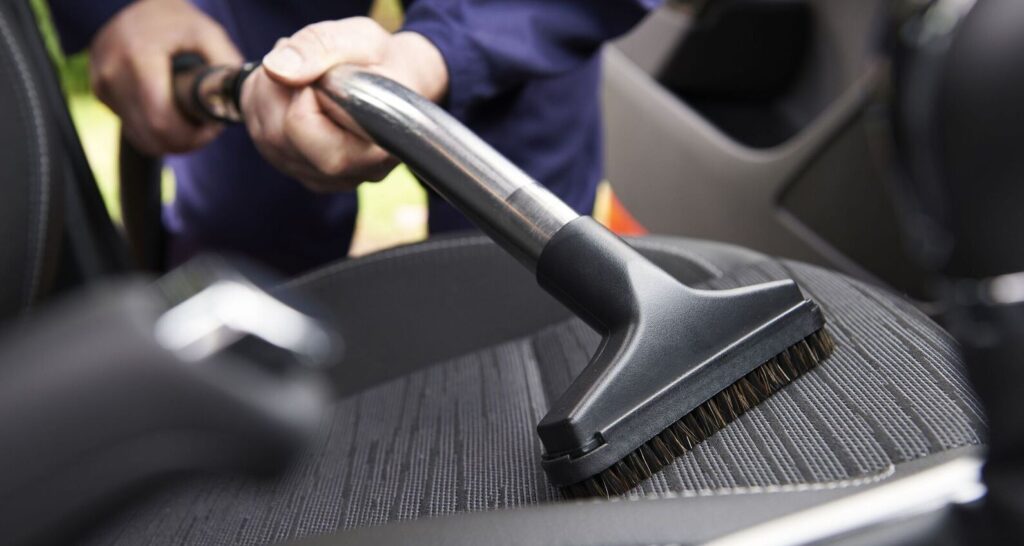
Fabric upholstery is a popular option in many vehicles due to its versatility and comfort. Known for its durability and resistance to stains, nylon upholstery is often used in high-traffic areas of the vehicle. Polyester upholstery, on the other hand, offers excellent resistance to fading and wrinkling, making it a great choice for maintaining a fresh look over time. Velour upholstery offers a plush and luxurious feel, adding a touch of elegance to the interior.
When cleaning fabric upholstery, it’s important to use the proper cleaning products and methods to avoid damaging the material. Vacuuming the upholstery regularly will help remove loose dirt and debris and prevent it from becoming embedded in the fabric fibers. For deeper cleaning, use a mild detergent solution and a soft-bristled brush to gently scrub the upholstery, then rinse with clean water and dry with a clean towel. For more stubborn stains, such as coffee spills or grease, it may be necessary to use a special upholstery cleaner designed for fabric surfaces. Always test the cleaner on a small, inconspicuous area of the upholstery first to ensure compatibility and avoid potential damage. It is also important to follow the manufacturer’s instructions carefully and to avoid excessive moisture as this can lead to the growth of mold or mildew.
Vinyl Upholstery
Vinyl upholstery is durable and easy to clean, making it a popular choice for car interiors. Start by vacuuming the seats to remove any loose dirt or debris. Then wipe the vinyl surfaces with a solution of mild detergent and water using a soft cloth or sponge. For stubborn stains, use a vinyl cleaner or a mixture of baking soda and water. Be sure to rinse off any cleaning solution residue and dry the seats thoroughly.
Suede Upholstery
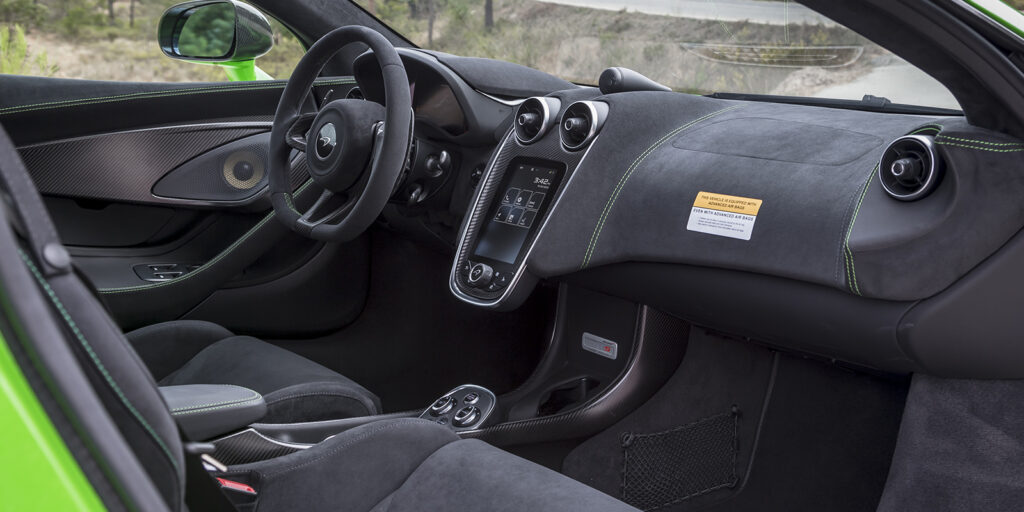
Suede upholstery adds a touch of luxury to your vehicle’s interior, but it requires careful maintenance. Use a suede brush or vacuum attachment to gently remove surface dirt and debris. For stains, apply a small amount of Suede Cleaner to a clean cloth and dab the stain, avoiding excessive rubbing. Allow the suede to air dry naturally, then use a suede brush to restore the pile.
Alcantara Upholstery
Alcantara upholstery is a premium material commonly used in high-end automobiles, known for its luxurious feel and exceptional durability. Unlike traditional fabric upholstery, Alcantara is a synthetic microfiber material that closely resembles suede in texture and appearance. It is made from a blend of polyester and polyurethane fibers, making it resistant to stains, fading and abrasion.
One of the key benefits of Alcantara upholstery is its soft and tactile feel, which provides a comfortable seating experience for passengers. Its non-slip surface also provides excellent grip, ensuring that passengers remain safely seated, especially during spirited driving maneuvers. In addition to its luxurious qualities, Alcantara upholstery is also highly customizable, offering a wide range of color options to match the interior design preferences of the vehicle owner. Whether it’s a sleek black finish for a sporty look or a vibrant red for a touch of personality, Alcantara offers versatility in design.
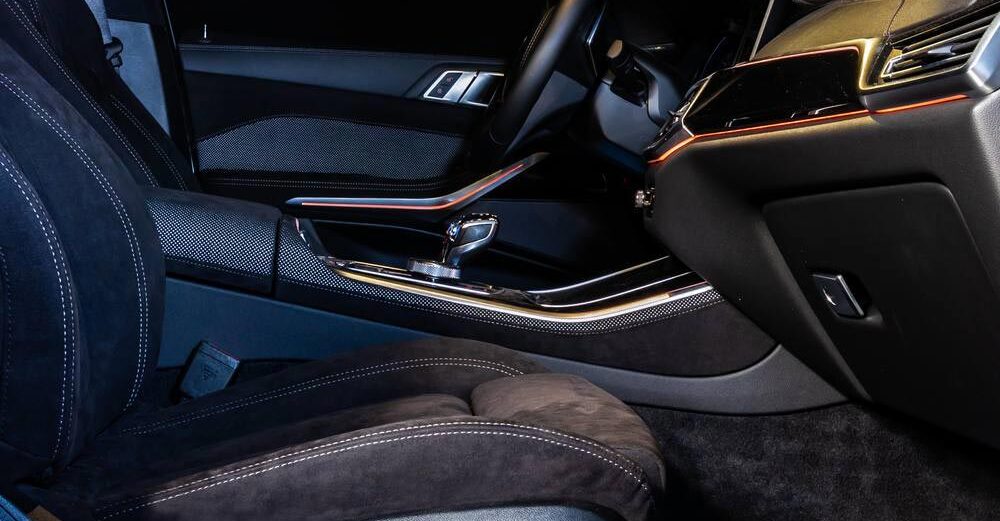
When it comes to cleaning and maintenance, Alcantara upholstery requires special care to maintain its pristine appearance. Regular vacuuming with a soft brush attachment will help remove surface dirt and debris, while periodic spot cleaning with a mild detergent solution will tackle more stubborn stains. It’s important to avoid using harsh chemicals or abrasive cleaning tools, as these can damage the delicate fibers of Alcantara. Instead, choose a gentle detergent specifically formulated for suede-like surfaces.
Regular maintenance and proactive cleaning practices are essential to maintaining the quality and appearance of your vehicle's upholstery over time. Here are some additional tips to help you care for your upholstery:
- Test cleaning products: Before using any cleaning product or method on your vehicle’s upholstery, it’s important to patch test a small, inconspicuous area first. This will help you determine if the product is compatible with your upholstery material and prevent potential damage or discoloration.
- Use gentle detergents: When cleaning your car’s upholstery, opt for mild and gentle detergents that are specifically formulated for automotive use. Avoid harsh chemicals or abrasive cleaners that can damage fabric or leather.
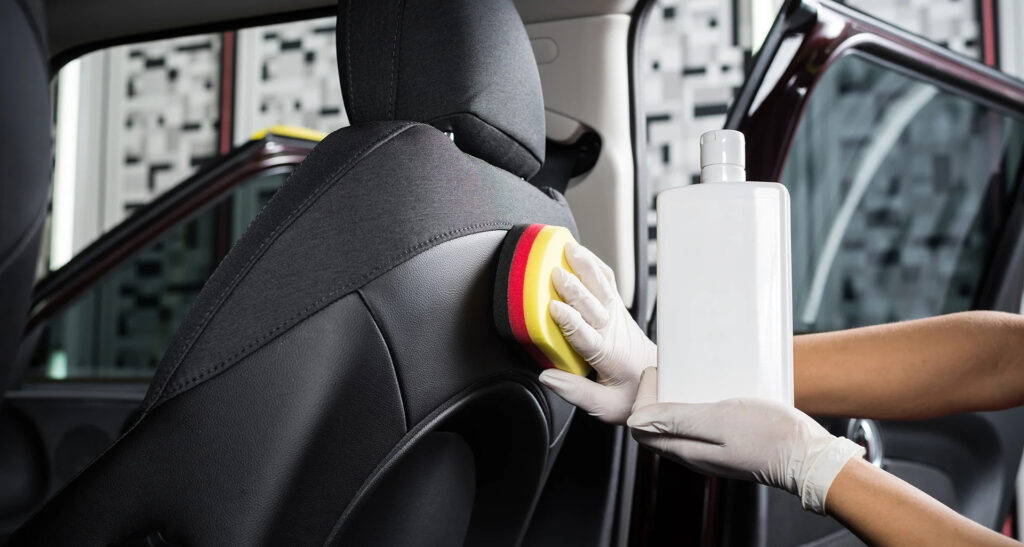
- Follow the manufacturer’s instructions: If your vehicle’s upholstery comes with specific care instructions from the manufacturer, be sure to follow them closely. These instructions may include recommended cleaning products, methods, and frequency of cleaning to ensure optimal results and avoid voiding any warranties.
- Clean up spills immediately: Accidents happen, but it’s important to address spills and stains on your car’s upholstery as soon as possible. Immediately blotting up spills with a clean cloth and using a mild detergent solution can help prevent stains from hardening and becoming more difficult to remove.
- Protective measures: Consider using protective treatments or coatings designed specifically for automotive upholstery to help resist stains and spills. These products can provide an extra layer of protection and make cleaning easier.
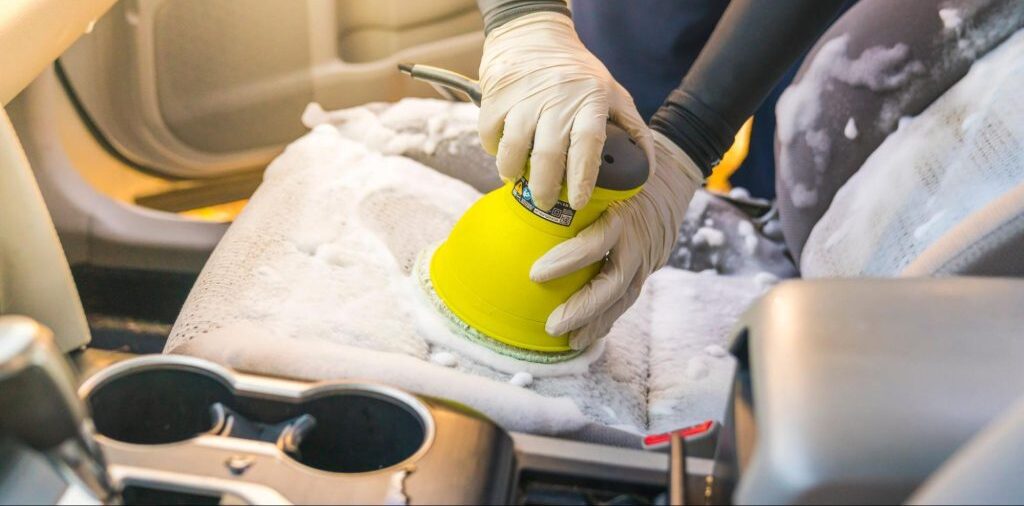
By incorporating these tips into your car care routine and remaining proactive about cleaning and maintaining your upholstery, you can ensure that your vehicle’s interior remains clean, comfortable and aesthetically pleasing for years to come.
